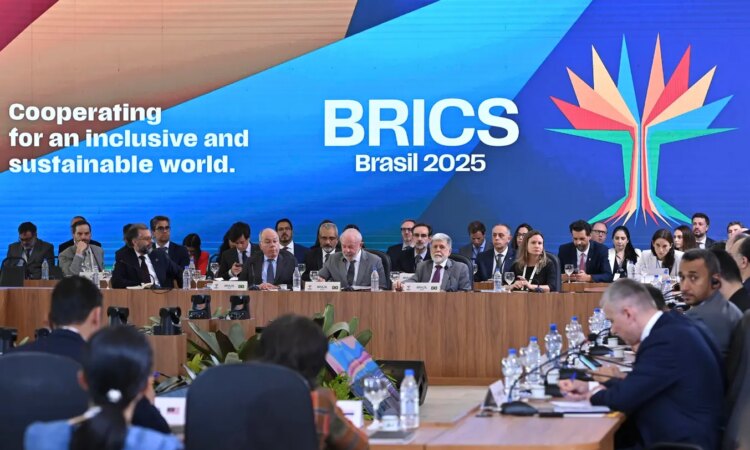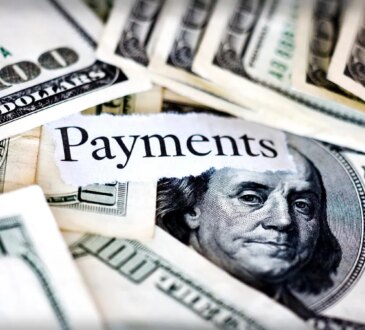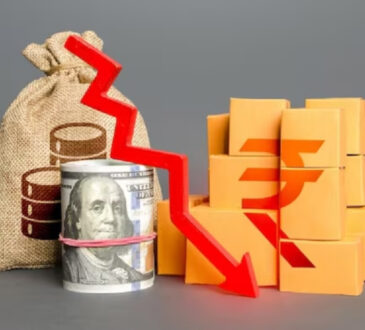
The “BRICS” is now a consortium of ten countries, with 22 more countries in application stages, led by Russia, China and India. Events since 2022 have lit a fire under the BRICS members to establish a new global financial and currency architecture that is wholly independent of the US dollar system, which has been the main focus since the Bretton Woods Agreement of 1944.
The President of Brazil, Luiz Inacio Lula da Silva, takes part in the opening ceremony of the First Meeting of Sherpas of the Brazilian BRICS Presidency in Brasilia, Brazil, on February 26, 2025. (Photo by Ton Molina/NurPhoto via Getty Images)
NurPhoto via Getty Images
At Bretton Woods, John Maynard Keynes introduced the idea of some kind of global floating fiat currency system, based on the “bancor,” and managed through a proposed International Clearing Union. But other countries, including the United States, threw up on that idea. Who, exactly, was going to manage this “bancor” and “International Clearing Union”? And when they screwed up, again, how would they be replaced? For literally thousands of years, the only thing that served as money throughout the world were the precious metals – gold and silver – and after the 1870s, gold alone. The Bretton Woods arrangement was based on gold.
They came to the same conclusion as President James Madison laid out centuries earlier:
The only adequate guarantee for the uniform and stable value of a paper currency is its convertibility into specie [gold]—the least fluctuating and the only universal currency.
Recently, the BRICS themselves had a similar sort of discussion, and many proposals were laid forth that involved some kind of supranational floating fiat currency, or possibly, a currency basket based on the domestic floating fiat currencies of the BRICS members. But these currencies themselves have had such a dismal track record (Russia, Brazil, India, South Africa …) that nobody got very excited about being tied to this grab-bag of losers. They were certainly not the “least fluctuating and only universal currency.” Just as at Bretton Woods, the only thing that everyone could agree on was gold.
Of course, people didn’t actually ship gold bullion here and there, every time they wanted to buy something, in the 1950s and 1960s. The Bretton Woods system, in practice, used US dollars, pegged to gold at $35/oz., as the effective “supranational currency.” People around the world did business via the sophisticated US banking system, and US central bank, just as they do today, but with a currency whose value was pegged to gold.
For example, if you wanted to buy some oil from Saudi Arabia, you would make a payment to a checking account of an oil company in Saudi Arabia (in those days it was the “seven sisters,” today Saudi Aramco), and then they would put some oil on a ship for you. This checking account might be at Citibank, or maybe Deutsche Bank. No gold went anywhere, although the value of the base currency was pegged to gold. Saudi Aramco might then use the money in its checking account to pay suppliers and employees. The money left over might be distributed to shareholders. Some of these shareholders might wish to buy a US Treasury bond, or a Ferrari, or invest in a private equity fund. A few might even want to buy gold bullion, and store it safely in a vault in Riyadh. Then — and only then — would physical gold actually travel somewhere.
This has been the nature of the world financial architecture since the nineteenth century, and even the eighteenth. When Britain bought cotton from India and Egypt, in the 1860s, they did not travel around with a ship of gold coins. They used bank accounts at London banks (and their branches in Cairo and Delhi).
Today, the BRICS, especially China, have apparently been building out a network of gold vaults worldwide, as part of a gold-based settlement system. While it is difficult to tell exactly what is going on here, it appears to me that this is inspired by the notion that some future “gold based settlement system” is going to literally consist of moving bars of gold around the world, whenever someone wants to buy something. That’s what “settlement” means – making a payment. While this is certainly possible, it is a system that basically went extinct about 300 years ago, because people invented better and more convenient systems.
No harm will be done by having a network of reliable gold depositories among BRICS members. But, 99.9999% of business should be done through the banking system, or alternatives including gold crypto stablecoins. BRICS governments should study the real-life international payment and settlement systems that existed in 1910. As it turns out, we have a very nice resource for this: the 1910 US Senate Monetary Commission Report, which was done as preparation for the Federal Reserve Act of 1913. It has over twenty volumes, on a number of specific topics including The Bank of France In Its Relation to National and International Credit, Banking in Russia, Austro-Hungary, the Netherlands and Japan, and Clearing House Methods and Practices. Despite rather daunting titles, they are straightforward and easy to read, in part because they were written by banking professionals – practical men of business– not academic economists who, then as now, didn’t know what they were talking about.
We today don’t need to imitate the institutions of 1910. But, I am pretty sure that we want something that is more sophisticated, and suited for our time, than a “gold settlement system” based on romantic notions of the Middle Ages.




